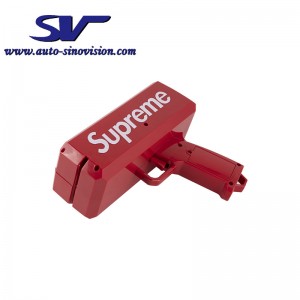In order to meet the requirements of corrosion resistance, wear resistance, decoration or other special functions of products, surface treatment technology came into being.
Surface treatment process of common products – plastic
The surface treatment of plastic products can be divided into mold surface treatment and plastic surface treatment. Common plastic products in life, rice cooker shell, speaker wall mount surround sound bracket, plastic shoe rack, household appliances, kitchen and bathroom products, etc.
There are four kinds of mold surface treatment technologies: polishing, sandblasting, skin texture and spark texture.
Polishing is the modification of the workpiece surface by using flexible polishing tools and abrasive particles or other polishing media. After polishing, a smooth surface can be obtained. The method of shooting quartz sand to the mold surface through an air gun with a certain air pressure, so as to form a layer of frosted surface on the plastic mold surface is sand blasting. There are two kinds of sand blasting: coarse sand and fine sand. However, this method has the defect that the surface of plastic parts is easy to be ground off, which should be paid attention to in the actual selection of methods.
Dermatoglyphics are made by chemical solution corrosion method, and dermatoglyphics are also the most widely used. Spark lines are the lines left after EDM plastic mold processing, but this method is generally not used to treat the surface, because the cost of this method is relatively high.
The plastic surface treatment technology mainly includes: painting, printing, spraying, bronzing and electroplating. Spray painting is the most commonly used method for surface treatment color of plastic products, including ordinary coloring, Pu grade varnish and UV grade varnish; If you need to print words or patterns on the surface of plastic products(plastic money guns), you can do printing;

Spraying mainly uses pressure or electrostatic force to attach paint or powder to the workpiece surface; Bronzing uses colored foil and hot mold engraved with patterns or fonts to produce colored embossed patterns or fonts on the surface of the workpiece at a certain temperature and pressure; Electroplating mainly depends on electrolysis. After electrolysis, a uniform, dense and well bonded metal or alloy deposition layer is formed on the surface of the workpiece, and the biggest advantage of electrolysis is low cost.
Surface treatment process of common products – metal
Firstly, aluminum and aluminum alloys are electrochemically oxidized in acid electrolyte by aluminum anodic oxidation method(For example aluminum hose fittings). The oxide film obtained has good adsorption, hardness and wear resistance. There is also an electrolytic coloring method for aluminum and aluminum alloys, which is conventional anodizing in sulfuric acid solution first, and the porous oxide film after anodizing is electrolyzed in the coloring solution of metal salt. It has the advantages of good coloring and sun resistance, low energy consumption, easy control of process conditions, etc.
The second is the surface treatment of stainless steel sheet metal, mainly through wire drawing, using mechanical methods, forming a certain texture on the surface is wire drawing, which can be made into straight lines, random lines, etc. according to needs.
Post time: Aug-05-2022

